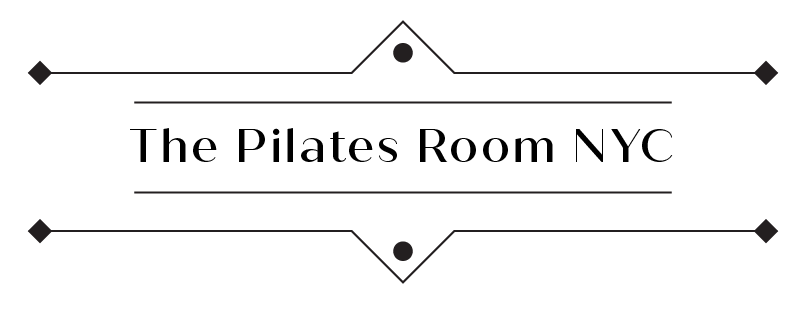Why Some Dancers Have a Fraught Relationship with Pilates
In an earlier blog post, we discussed why dancers might be well-suited to practicing Pilates. Many dancers gravitate to Pilates to help them stay connected to their body and to supplement their performance with movements that allow them to maintain their form and gain the strength required for specialized dance moves. Once their performance days are over, dancers may see Pilates as a way to continue working out in a way that prioritizes foundational philosophies they’ve long embraced.
However, sometimes people who have been classically trained as dancers have a fraught relationship with Pilates. They may experience a sense of conflict or confusion when starting their Pilates practice, especially around the idea of the “right” way to move or position their bodies. If you look at the way dancers are trained, it makes sense that there might be some incongruities between dance and Pilates.
Dancers are trained in techniques that prioritize certain aesthetics—like turnout, line, fluidity or extension. Pilates, on the other hand, emphasizes anatomical alignment, core engagement, and controlled movement, often with more focus on spinal neutrality and joint safety. These goals may clash. For instance, turnout is a foundational technique in ballet and various other forms of dance. Turnout allows for greater extension of the legs. However, in Pilates, the work is done in both 1. A Pilates V stance, which is a much smaller turned out position than a ballet first and 2. Parallel format, which describes a position where the feet are aligned straight forward, parallel to each other and hip-width apart, similar to how you would stand naturally. Ballet dancers may feel uncomfortable working in parallel, which is foundational in Pilates. Additionally, Pilates cues may focus on deep abdominal activation in ways that feel foreign to dancers, who are used to pulling up differently. Pulling up describes a technique that involves lengthening and strengthening the body, creating a sense of height and lightness, but contrasts with Pilates’ attention to the deep muscles of the core involved in stabilization and posture, which focuses on conscious control of each movement and breath, ensuring proper abdominal muscle activation and alignment.
Perfectionism and Identity
Dancers are typically high achievers trained to seek the "right" form, which can lead to internal pressure to complete movements with perfect form. Pilates, while precise, also encourages internal awareness and adaptability, which can feel ambiguous or even frustrating to someone conditioned to value external feedback or visual correctness.
Muscular Imbalances
Pilates can expose movement habits or muscular imbalances that dancers have relied on—sometimes for years. Being told to move in a "healthier" or "more efficient" way might challenge their identity. A dancer might think: This is the way I’ve been trained to do this movement all of my life, why am I now being told it’s incorrect?
Dance movements are often expressive and artistic, focused on performance and conveying emotion through movement, while Pilates emphasizes controlled, precise movements for core strength, flexibility and injury prevention. Pilates exercises are generally slower and more focused on engaging the core muscles for stability and controlled movements, whereas dance can involve a wider range of motion, speed and dynamic movements.
Pilates can sometimes be difficult for dancers who are accustomed to valuing specific methods of movement. They must learn a new way to exert themselves physically. They may even find themselves weaker in certain muscle groups, which can lead to overdevelopment of some muscles and underdevelopment or tightness in opposing muscles. For instance, ballet dancers are often prone to tight hip flexors and calves and weaker glutes. Pilates, on the other hand, focuses on building balanced muscle strength throughout the entire body, with particular attention to strengthening the core and improving flexibility and joint mobility.
Instructor Influence
For dancers who are transitioning to Pilates, it may be as simple as finding an instructor who understands the underlying differences in the way dancers and Pilates practitioners are trained. The Pilates instructor's approach is important. If they present movement as “right” or “wrong” without context, it can reinforce the conflict. But instructors who understand dance backgrounds often frame things with more nuance (and without stark value judgments) explaining the why behind corrections and how different goals (performance vs. rehabilitation) require different strategies. The right Pilates instructor can help emphasize the distinct purpose of each discipline. Pilates isn't replacing dance—it’s supporting longevity and efficiency. This type of instructor understands that each system coexists for its intended purpose. They can translate Pilates cues into dancer-friendly language (and vice versa). Instructors who come from a dance background are more likely to understand and explore how dance technique can be translated into functional movement patterns.
Dancers who are new to Pilates may need to give themselves the permission to be a student again. In dance, you’re often expected to know and perform. In Pilates, it’s okay (and necessary) to experiment, make mistakes and refine from within. It might be helpful to reframe the transition as research instead of rehearsal. It’s also a good opportunity for dancers to allow for a mental shift from how things look to how things feel—this can help underscore the mind-body connection, which is imperative in Pilates. Both systems can complement each other, and dancers might find themselves thinking through ways to find balance in their musculature as they gain strength and complete their dance technique.

